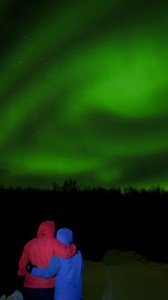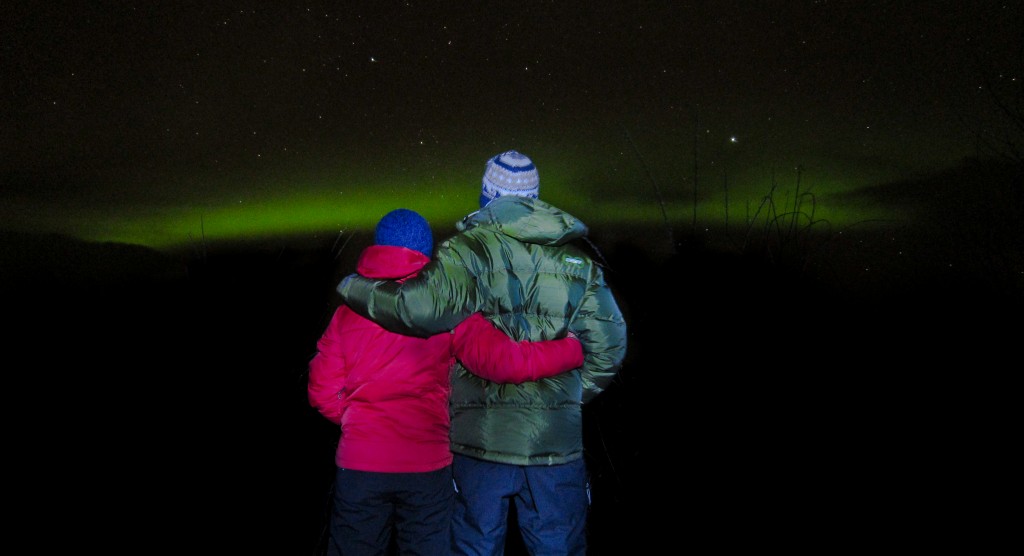It’s going to be a banner year for the Northern Lights.
Solar cycles change like seasons, having periods of high activity, and low activity. This happens roughly every 11 years, and we are now in a period when magnetic storms are at their most active. In fact, winter 2013 will be a peak, meaning this is a great time to plan a trip to watch the Aurora Borealis.
But where to go?
Contrary to popular belief, the northern lights are not very bright at the North Pole. In fact, when solar winds hit Earth, the reaction creates a halo pattern that often appears over Fairbanks, Alaska – a phenomena that has turned the city into a unique winter getaway.
Visitors who brave frozen Fairbanks in the winter are rewarded with curtains of iridescent green (and sometimes red) that dance and shimmer across the sky. The dry, clear nights mean you stand a 90% chance of seeing the Aurora Borealis on a typical three-night weekend.
 The locals suggest planning your stay during a new moon from December to March. Get clear views atop Ester Dome 13 miles west of Fairbanks, or watch the lights from the naturally heated waters at Chena Hot Springs Resort. Our favorite place to stay is an old historic cabin (with hot tub that works at 40 below!) called Pedro’s Hide-A-Way.
The locals suggest planning your stay during a new moon from December to March. Get clear views atop Ester Dome 13 miles west of Fairbanks, or watch the lights from the naturally heated waters at Chena Hot Springs Resort. Our favorite place to stay is an old historic cabin (with hot tub that works at 40 below!) called Pedro’s Hide-A-Way.
During the short days, snowshoe on trails within the White Mountains over snow that is Styrofoam-dry. Or mush a team of dogs on a frozen river with Sled Dog Adventures.
For a really cool forecast map, go here.
Photo Tip: When photographing the northern lights, bring a tripod and set your camera for a long exposure (try around 10 seconds). To light people in the foreground, bring a flashlight and experiment with short bursts of light during your exposure.
